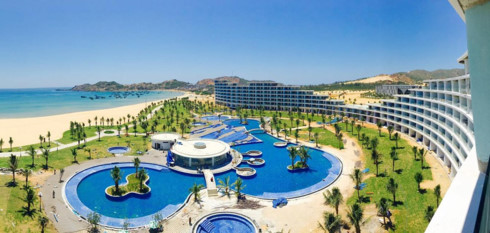Hotel investors continued to seek alternative opportunistic investments in the emerging tourism market of Vietnam during the first half of 2017, says real estate consultancy JLL.

However, the company said the cities of Hong Kong, Singapore, Sydney and Melbourne remained the central focus of investors due to their positive long-term tourism fundamentals.
All told, investment in hotels in the Asia Pacific region for the six months running up to July 2017 amounted to approximately US$2.9 billion, said JLL, noting there were 28 deals in six countries within the region.
Hong Kong and Australia were the standout markets in terms of inbound investment, which amounted to roughly US$1.5 billion, said Frank Sorgiovanni, head of research for the Asia Pacific region at JLL.
However, opportunities to acquire hotels in many destinations in the region remained limited and investors continued to seek alternative investment in the emerging markets of Vietnam and Cambodia, where strong Chinese tourism is driving growth in the inbound figures.
Following the recent rebranding of the Nam Hai resort in Hoi An, which is now under Four Seasons management, hotel operators are expected to eye locations in Vietnam with greater scrutiny in the near term, said Mr Sorgiovanni.
If hotel operators set their sights on specific locations in the Southeast Asian country, then investors are sure to follow.
He said JLL remains particularly bullish about the growing tourism and thriving economy in Vietnam, which has witnessed a lot of interest from foreign investors in its hotel and resort market over the past year and a half.
Nguyen Ngoc Tram, researcher at Jones Lang LaSalle Vietnam, agreed. She noted that there has been strong interest of foreign investors in the hotel segment of the tourism industry particularly in the cities of Phu Quoc, Nha Trang and Danang.
Substantially all this interest is grounded in the rising number of inbound Chinese.
Though tourism in Vietnam is still in its infancy, there is a general perception by investors that the industry holds the potential for growth, which could possibly translate to good rates of return on investments in resorts if the upward trends in Chinese tourism continues.
Real estate expert Dang Hung Vo said the lack of infrastructure had been the major hindrance to growth of tourism in Vietnam. The main driver of the industry over the past year had been the record high number of inbound Chinese.
A record 2.7 million Chinese tourists arrived in Vietnam in 2016 – a 55% increase over the previous year, according to official statistics, which meant that Chinese tourists accounted for 30% of foreign arrivals.
Most of the Chinese tourists headed to either Danang or Nha Trang.
A research report on 2015-2016 Chinese outbound tourist consumption by World Tourism Cities Federation and Ipsos, a market research firm, was presented at the World Travel Market in London late last year.
Based on a survey of over 11,000 Chinese tourists, the report suggested that more than 76% considered travel an important way to improve their quality of life and happiness.
It also found that the average Chinese tourist made five foreign trips abroad during a lifetime.
The report concluded that as the Chinese outbound market matures, there will be more independent travellers and fewer who opt for package tours, meaning destinations such as Vietnam will need to develop new types of tourism products to accommodate them.
Many tourism experts have said they suspect that as Chinese millennials (people who reached adulthood by the year 2000) move into the tourism market, the trends in the rising outbound tourism numbers to Vietnam will continue.
VOV